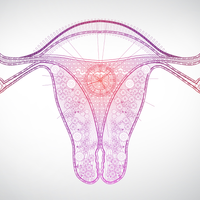Login
Subscribereproductive biology

How Immature Egg Cells in Ovaries Resist Aging
Shafaq Zia | Aug 4, 2022 | 3 min read
The cells’ mitochondria skip a key metabolic reaction that takes place in other cells in the body, a study finds.

Meet the Algae That Went from Male/Female to Hermaphroditic
Natalia Mesa, PhD | Aug 1, 2022 | 2 min read
A study suggests that several species of brown algae may have independently evolved to express both sexes simultaneously, and it’s likely that female algae evolved male traits—not the other way around.

Trees’ Scent Tricks Hornets Into Shuttling Seeds
Natalia Mesa, PhD | Jun 30, 2022 | 4 min read
Agarwood fruit smells like prey, luring carnivorous hornets, a study suggests.

Epigenetic Changes to Placenta Correlate with Maternal Depression
Chloe Tenn | Feb 1, 2022 | 2 min read
An epigenome-wide association study found more than a dozen methylation changes in placental DNA that correlated with expectant mothers’ self-reports of depression and stress during their pregnancy.

Some Barnacles Can Move Around to Improve Feeding Position
Chloe Tenn | Oct 6, 2021 | 7 min read
The Scientist spoke with marine biologist and barnacle researcher John Zardus about why turtle barnacles—previously thought to be immobile—in fact slowly travel. He thinks the answer is food.

Infographic: Research Questions to Be Tackled by Uterus Transplants
Jef Akst | Aug 1, 2021 | 2 min read
Scientists are banking various samples from recipients of donated uteruses to learn all they can about the biology of the organ, and about transplantation more generally.

A New View of My Own Past
Jef Akst | Aug 1, 2021 | 6 min read
Hearing others’ perspectives on infertility and pregnancy has me reconsidering my own reproductive journey.

Infographic: Maternal Microbiota Has Lasting Effects on Offspring
Carolyn A. Thomson and Kathy D. McCoy | Aug 1, 2021 | 3 min read
Work in rodents shows that the bacteria living in a mother’s gut can produce immunomodulatory metabolites and influence the production of maternal antibodies—both of which can affect her offspring’s development.

The Role of Mom’s Microbes During Pregnancy
Carolyn A. Thomson and Kathy D. McCoy | Aug 1, 2021 | 10+ min read
Bacteria in the gut influence the production of antibodies and themselves secrete metabolites. In a pregnant woman, these compounds may influence immune development of her fetus.

Uterus Transplants Hit the Clinic
Jef Akst | Aug 1, 2021 | 10+ min read
With human research trials resulting in dozens of successful deliveries in the US and abroad, doctors move toward offering the surgery clinically, while working to learn all they can about uterine and transplant biology from the still-rare procedure.

Opinion: How Biomedicine Could Transform Human Reproduction
Henry T. Greely | Aug 1, 2021 | 3 min read
CRISPR and other innovations are likely to open up a wealth of new options for how people have children.

Contributors
The Scientist | Aug 1, 2021 | 4 min read
Meet some of the people featured in the August 2021 issue of The Scientist.

Study that Impregnated Male Rats Stirs Controversy
Andy Tay | Jun 25, 2021 | 7 min read
A combination of approaches, including uterus transplantation and the joining of two animals’ circulatory systems, allowed males to bear pups, according to a preprint. But some experts say the experiments were not justified.

Polycystic Ovary Syndrome May Be Inherited Epigenetically
Katarina Zimmer | Feb 9, 2021 | 5 min read
Female mice modeling the hormonal disorder can pass symptoms down for several generations, likely via changes in genome methylation that are similarly observed in women with PCOS.

Eight Proteins Turn Mouse Stem Cells into Egglike Cells
Ashley Yeager | Dec 16, 2020 | 3 min read
The identification of the transcription factors that elicit oocyte growth will aid reproductive biology research and might help women with fertility issues, scientists say.

Single-Cell Analysis of Ovarian Cortex Fails to Find Stem Cells
Amy Schleunes | Mar 6, 2020 | 5 min read
The controversial oogonial stem cells eluded a team of Swedish researchers who mapped high-quality tissue samples of the human ovary, prompting more questions about the cells’ existence.

Swamp Wallabies Can Have Two Separate Pregnancies at Once
Lisa Winter | Mar 3, 2020 | 3 min read
Before the joey is born, another pregnancy has already started.

Endocrinologist and Reproductive Physiologist Wayne Bardin Dies
Catherine Offord | Nov 18, 2019 | 3 min read
Bardin’s work helped lead to the development of long-acting contraceptive devices for women.

Human Testicles Contain Endocannabinoid System Components
Ruth Williams | Sep 19, 2019 | 3 min read
Proteins that synthesize, bind, and degrade endocannabinoids are present in the body’s sperm factories, suggesting that the use of cannabis may directly affect them.
